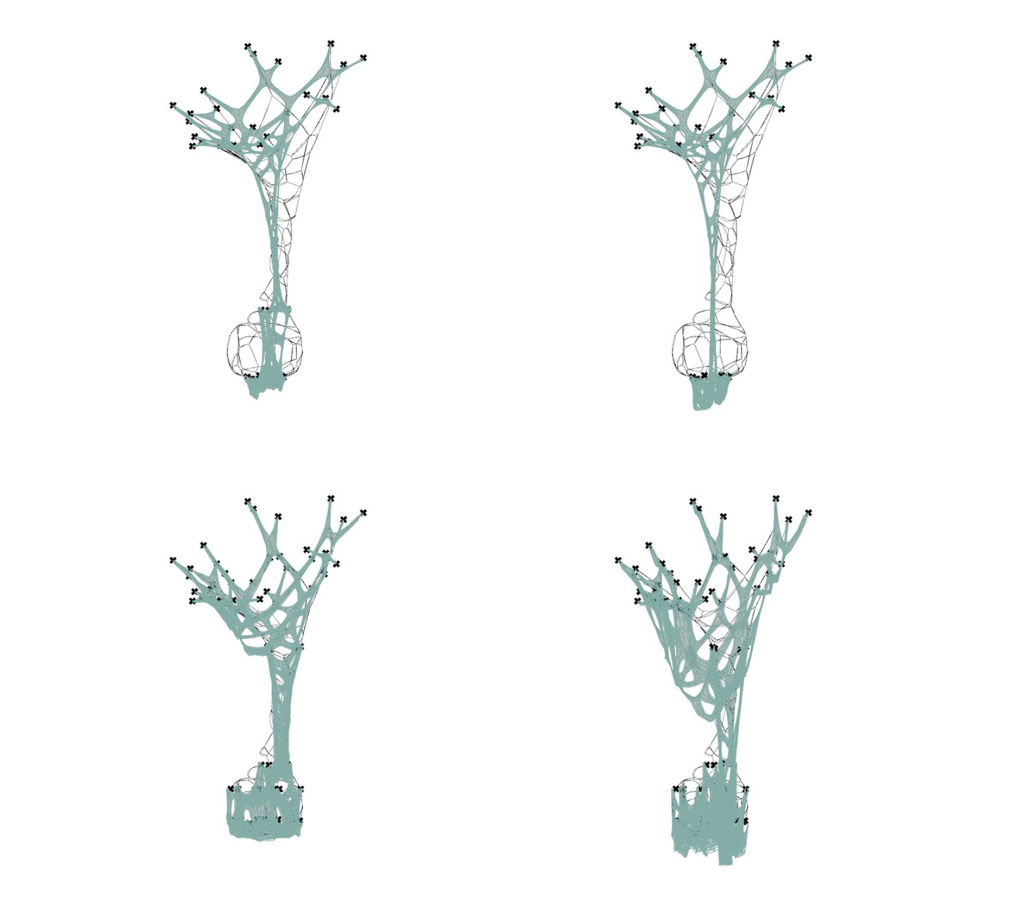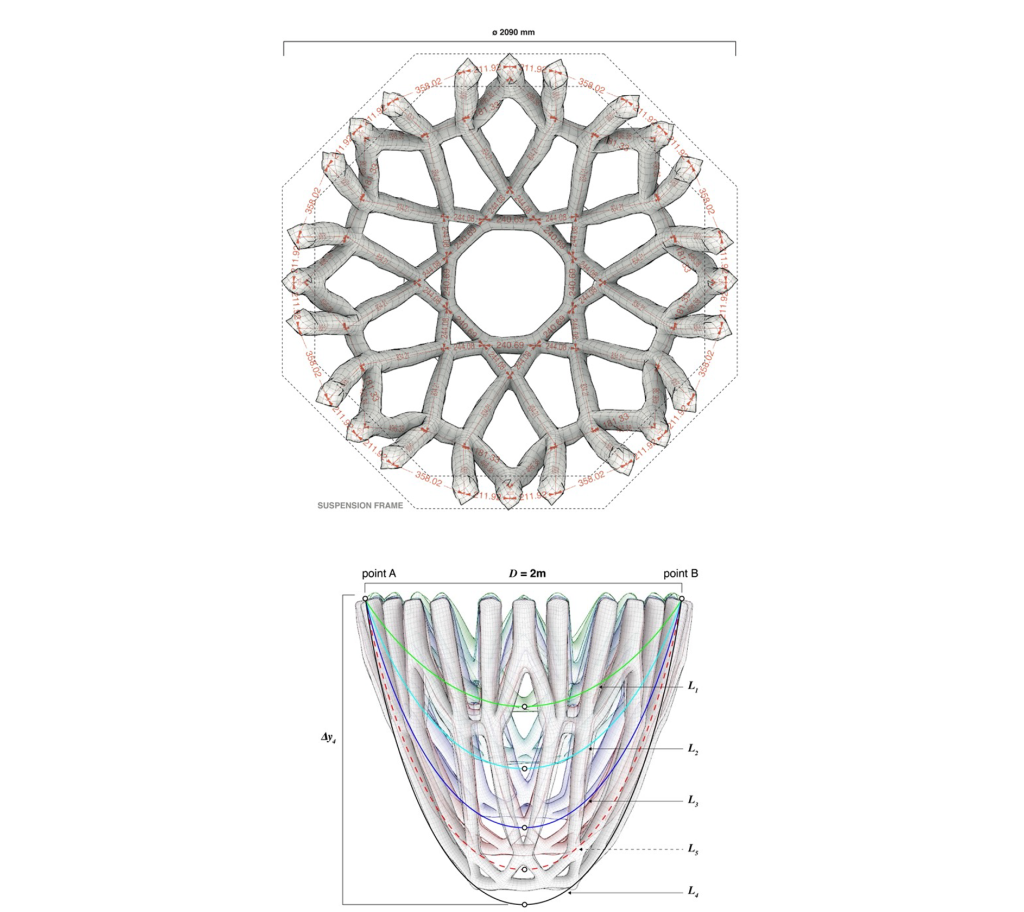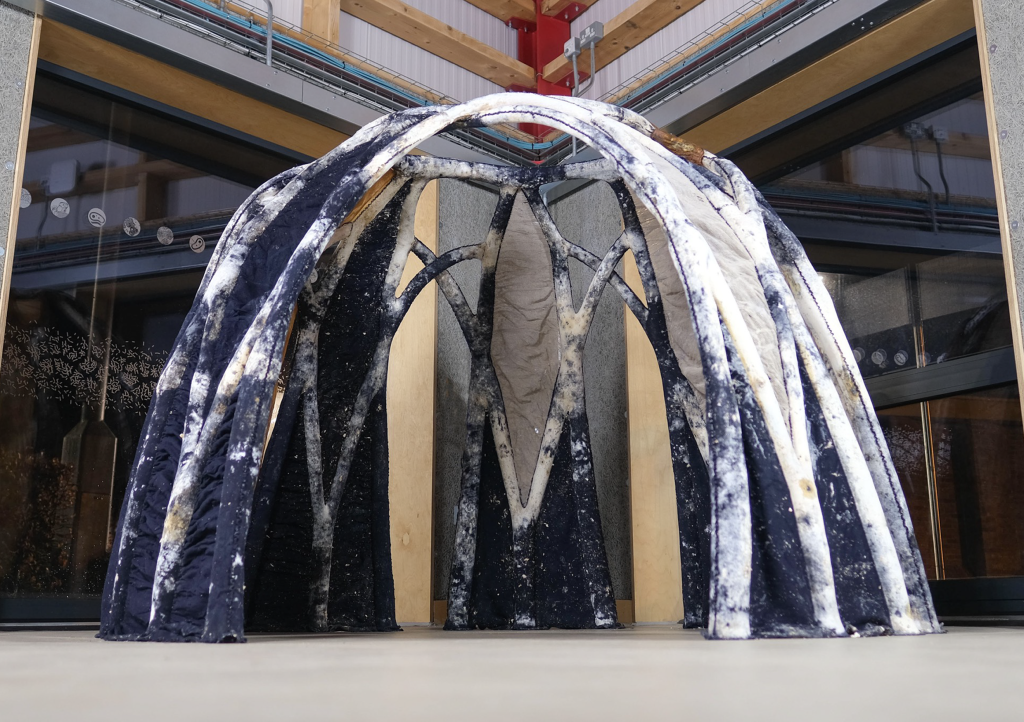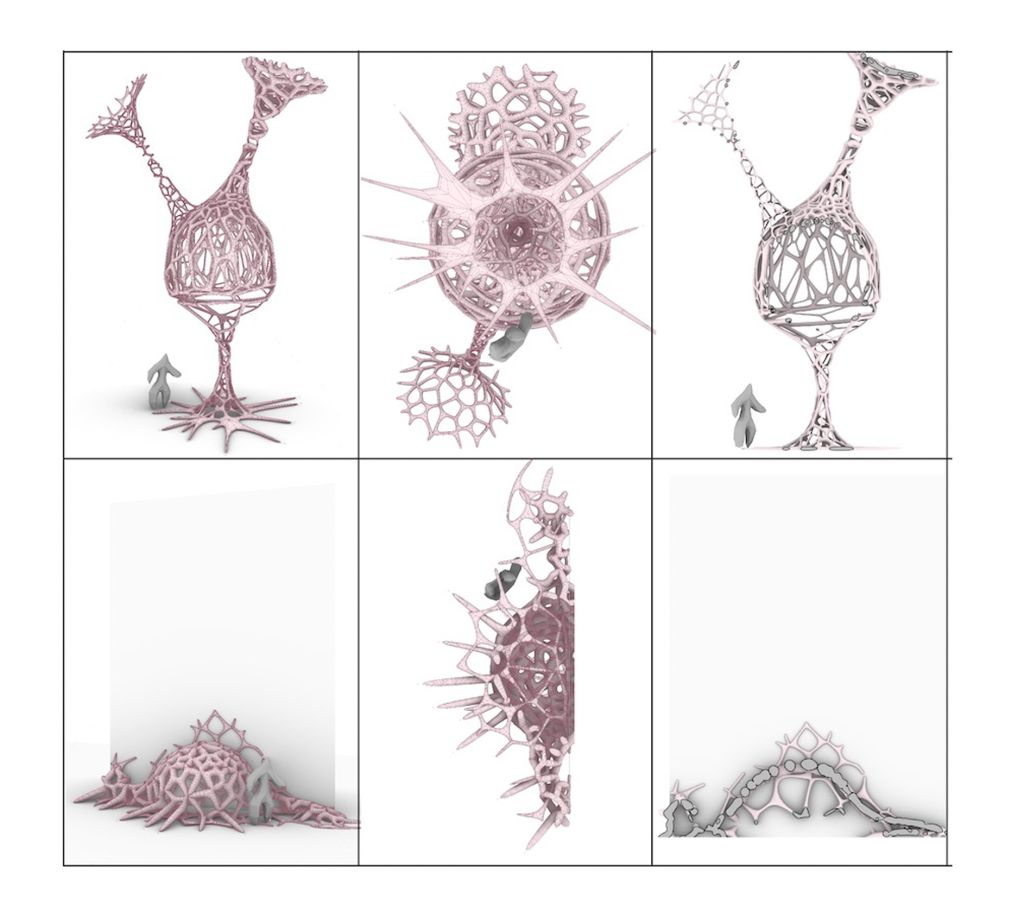Jane Scott, Elise Elsacker, Romy Kaiser, Armand Agraviador, Aileen Hoenerloh, Dilan Ozkan, Ben Bridgens
BioKnit explores how knitted fabric can be used in a biohybrid system with fungi and bacteria to produce a large-scale, freestanding structure. In contrast to the smooth, hard, rectilinear building interiors which have become ubiquitous over the last hundred years,
BioKnit examines how novel construction materials enable us to rethink the spaces and surfaces we inhabit. The prototype employs knitted fabric as a scaffold and scaling agent to guide the growth of mycelium (the root network of fungi) to form a bespoke composite. The structure provides a framework to host 2m long bacterial cellulose panels pregrown to shape. Uniquely, the knitted formwork enabled the 2m diameter structure to be grown as a single piece.
Growing as construction presents an opportunity to rethink a lot of the conventional construction processes and to develop new sustainable practices. Biofabrication has the flexibility to work locally either on site or off site, to reduce transportation associated with shipping individual parts for assembly. The team have also begun to work with local waste substrates to produce mycocrete with the aim of developing carbon negative materials for use in construction.
The research proposes applications for BioKnit in non-load bearing applications in buildings, for internal linings and to shape space. The ability to produce new geometries, curved surfaces and organic forms is very compelling for future architecture as well as new aesthetics and new tactile experiences that emerge from mycelium coming together with textiles at an architectural scale.



